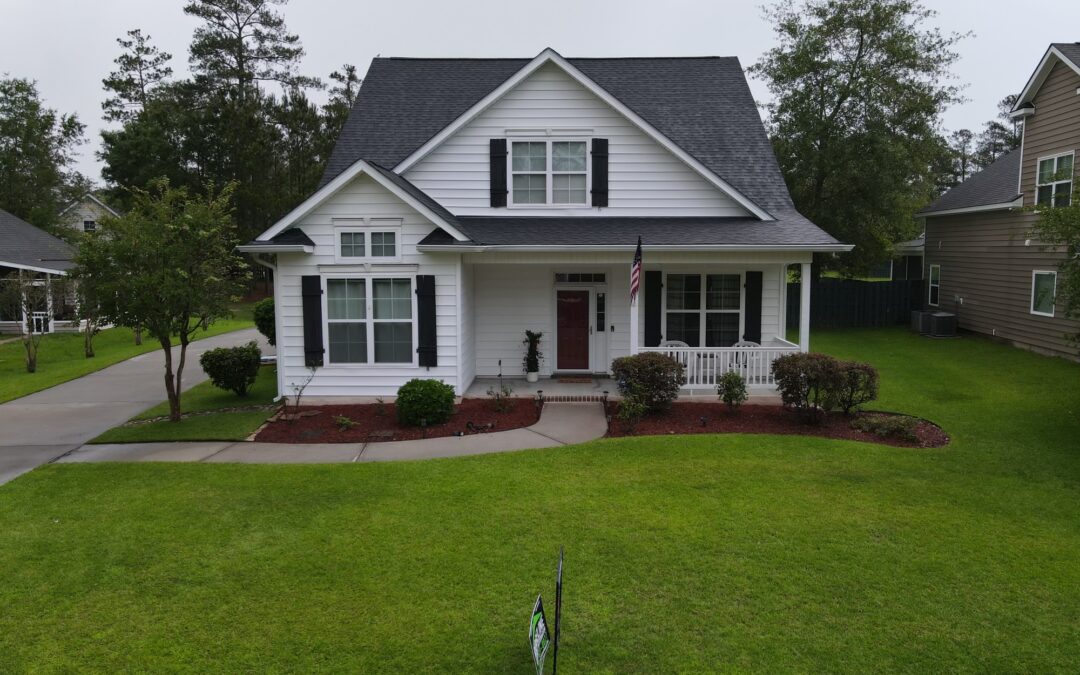Does New Siding Increase Home Value?
Homeowners continually seek ways to boost their property’s value, particularly in today’s competitive real estate market. Among the various improvements, new siding offers a compelling case. Not only does it enhance a home’s aesthetic appeal, but it also provides practical benefits such as better insulation and reduced maintenance costs. This makes siding replacement a sought-after upgrade for many homeowners aiming to increase their property value.
The Significance of New Siding in Today’s Market
With the real estate market being as active as it is, the exterior look of a home can significantly impact its selling price. First impressions are key, and siding plays a major role in the “curb appeal” department. According to the Cost vs. Value 2023 Report by Remodeling Magazine, homeowners can recoup about 76.7% of the cost of new siding upon resale. This impressive return on investment is due to the immediate visual transformation new siding provides, making homes more attractive to potential buyers.
What the Experts Say
According to real estate expert Kim Hanson, “A home’s exterior is its greatest asset when it comes to attracting potential buyers. New siding can mean the difference between a quick sale and a property that lingers on the market.” This expert insight underscores the financial prudence of installing new siding, which can serve as a deciding factor for buyers.
Diverse Siding Materials: A Comparative Analysis
Various siding materials are available, each offering unique benefits. Here’s a deeper look into different types:
- Vinyl Siding: Affordable and low-maintenance, vinyl siding is a practical choice for budget-conscious homeowners. It’s available in numerous colors and textures, suitable for various architectural styles.
- Fiber Cement Siding: Combining durability with aesthetic appeal, fiber cement siding offers the look of wood or stucco at a lower price. It’s resilient to fire, wind, and pests, making it a favorite in areas prone to extreme weather.
- Wood Siding: Known for its classic and natural appearance, wood siding appeals to those preferring an authentic look. While beautiful, it requires more maintenance to protect against rot and insects.
- Brick Siding: Offers unrivaled durability and a timeless look. While more expensive, it’s an investment in a solid, energy-efficient facade with a lifespan that can exceed a century.
Each material comes with distinct pros and cons, influencing its suitability based on regional climate, architectural style, and buyer preferences.
An Analogy: Siding as Your Home’s Outfit
Imagine your home is like a person preparing for an important interview. Just as proper attire can make a remarkable impression, quality siding positions your home as a desirable choice for buyers. For example, consider a home with old, weathered siding compared to one with new, modern materials. The latter often commands a higher price and receives more immediate interest, highlighting the tangible returns similar to donning a well-tailored suit.
Popular Siding Options and Their Applications
Each siding material not only varies in appearance but also in application. Here’s a closer look at when each type may be used:
- Vinyl Siding: Ideal for homeowners looking for cost-effective solutions, particularly in suburban developments or areas not exposed to extreme climatic conditions.
- Fiber Cement Siding: Best for regions with high wildfire risk or homeowners seeking a low-maintenance yet attractive solution.
- Wood Siding: Perfect for historical homes or areas with a tradition of craftsmanship, where authenticity and unaltered aesthetics are valued.
- Brick Siding: Suitable for those focused on longevity and a luxurious look, typically used in high-end developments or geographical locations with harsh weather.
Future Implications: Siding Trends and Innovations
Looking forward, several trends are expected to reshape the siding industry. Home efficiency and sustainability are at the forefront of new developments. Advancements in materials such as recycled composites and smart siding capable of adjusting to environmental conditions are gaining traction. Industry forecasts suggest that integrating more sustainable materials will increase homeowners’ ability to qualify for “green” certifications.
According to industry expert John Lewis from the National Association of Home Builders, “The future of home siding is not only about the aesthetics but also about how these materials contribute to the overall efficiency and ecological footprint of a home.” This indicates an increasing demand for innovations that are both technologically and environmentally advanced, allowing siding materials to play a crucial role in evolving the concept of a home’s envelope.
In conclusion, new siding offers homeowners a multifaceted solution for boosting home value. It enhances curb appeal, improves energy efficiency, and is an investment that pays off on resale. As siding technology advances, options will abound for environmentally conscious buyers and sellers, ensuring that homes continue to meet the evolving demands of the market.

